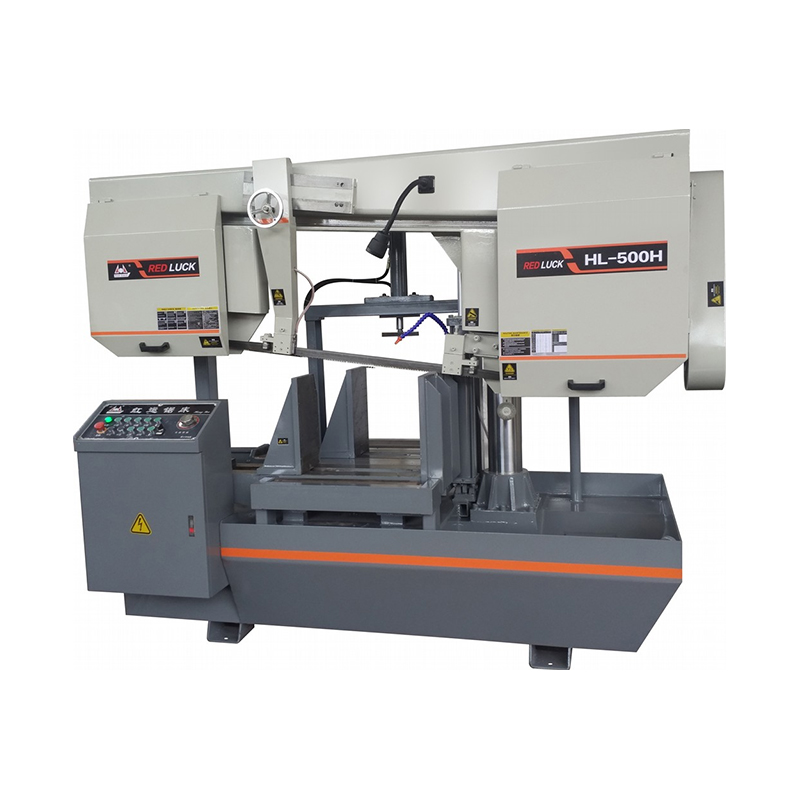Why Choose a Horizontal Band Saw for Metal Over Other Types?
When it comes to precision and efficiency in metal fabrication, the type of cutting equipment used can significantly impact both productivity and final product quality. Among various options available in the market, the horizontal band saw for metal stands out as one of preferred tools for workshops and industrial operations. While vertical saws and other types of cutting tools have their advantages, the horizontal band saw for metal offers a unique combination of stability, cutting capacity, and automation that makes it a outstanding choice for many professionals.
One of the primary advantages of using a horizontal band saw for metal is its ability to deliver consistent and straight cuts across large and solid metal workpieces. Unlike vertical saws, which require the operator to guide the material through the blade, a metal cutting horizontal band saw secures the material in place and allows the blade to descend with controlled force. This reduces the chances of human error and enhances the accuracy of each cut, especially for repetitive tasks in mass production environments.

Furthermore, the metal cutting horizontal band saw is engineered to handle a wide range of metal types and thicknesses. Whether you're working with aluminum, steel, copper, or hard alloys, this type of saw can manage the workload without compromising on performance. Its robust construction allows it to accommodate heavy-duty materials that would challenge the capacities of smaller or less stable saws. As a result, shops that require frequent cutting of metal bars, pipes, and billets benefit greatly from integrating a metal cutting horizontal band saw into their operations.
Another compelling reason to choose a horizontal band saw for metal is its ability to automate part of the cutting process. Many models come with hydraulic feed control, material clamping systems, and programmable cut lengths. These features reduce manual intervention, increase safety, and free up workers for other tasks. In contrast, manual saws or vertical models often require constant monitoring and adjustments, which can slow down the workflow and increase fatigue.
It is also worth noting the growing popularity of the horizontal vertical metal bandsaw—a hybrid solution that combines features of both horizontal and vertical configurations. A horizontal vertical metal bandsaw can be adjusted to switch cutting orientations, providing flexibility for users who need to perform both types of cuts without investing in separate machines. While it may not offer the same level of specialization as a dedicated horizontal band saw for metal, the horizontal vertical metal bandsaw is an outstanding choice for smaller shops looking to improve space and functionality.
Maintenance is another area where the horizontal band saw for metal shines. Its design typically allows easier blade replacement, lubrication, and alignment compared to more complex saw types. A well-maintained metal cutting horizontal band saw can deliver years of dependable service, minimizing downtime and long-term costs. In high-throughput environments, reliability is non-negotiable, and this is where these machines consistently prove their value.
In addition to performance and durability, many modern horizontal band saws for metal are now designed with noise reduction and ergonomic controls in mind. As workplace safety and comfort become increasingly prioritized, manufacturers are integrating innovations that not only improve cutting efficiency but also reduce operator strain and environmental impact.
Choosing a horizontal band saw for metal over other types is a smart investment for anyone serious about metalworking. The metal cutting horizontal band saw excels in precision, automation, durability, and safety. While a horizontal vertical metal bandsaw offers additional flexibility, the dedicated horizontal design remains the go-to solution for consistent and heavy-duty metal cutting needs. Whether for a large industrial facility or a mid-sized fabrication shop, the horizontal band saw for metal continues to be a cornerstone tool in the world of metal cutting technology.

 English
English 中文简体
中文简体 русский
русский

